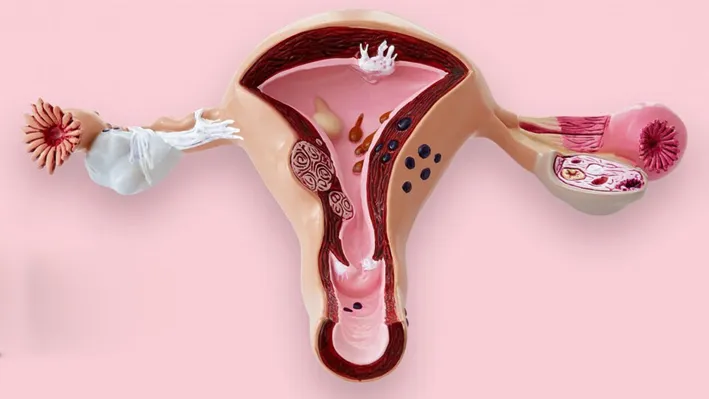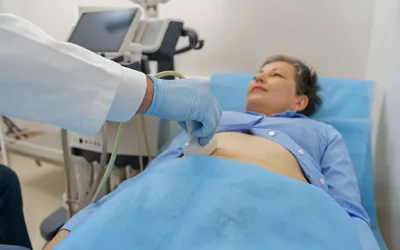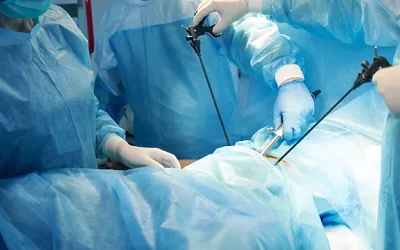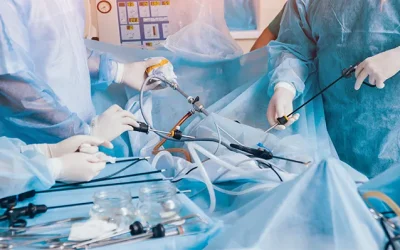Fibroids also known as uterine leiomyoma, are non-cancerous growths that develop in or around the uterus. They are composed of muscle and fibrous tissue and can vary greatly in size, from microscopic to as large as a melon. While the exact cause of fibroids is not well understood, factors such as genetics, hormones, and lifestyle may play a role. The majority of the time fibroids don’t cause any symptoms but when they are multiple and large in size can cause symptoms such as heavy menstrual bleeding, prolonged periods, pelvic pain and pressure, frequent urination, infertility, and complications during pregnancy.
The symptoms depend on their number, size, and location.
Based on their location they are classified as submucous, serosal, or intra-mural.
Treatment options range from monitoring with no treatment or medical management to control symptoms or dissolving them with non-invasive techniques such as MRI-guided focused ultrasound, Uterine artery embolisation, or surgical interventions such as endometriosis excision surgery.
The choice of treatment depends on factors like the severity of symptoms, the size and location of the fibroids, and the patient’s reproductive plans. However, opting for the surgery is a better option. Endometriosis excision surgery is a successful therapy for those experiencing constant pain and fertility issues brought about by endometriosis. By exactly eliminating endometrial tissue, this surgery offers long-haul relief, works on personal satisfaction, and better reproductive results. It is a strongly suggested choice for overseeing endometriosis side effects.
Laparoscopy in gynecology
Get Minimally Invasive Solutions Laparoscopy in Gynecology
Laparoscopy in gynecology is a minimally invasive surgical technique that uses a telescopic camera to visualize the internal organs in the pelvis and abdomen.
It helps surgeons to perform keyhole surgery with small 0.5 to 1cm skin incisions to diagnose and treat various gynecological conditions such as infertility, fibroids, endometriosis, pelvic pain, ovarian cysts, and many more including cancer.
All surgeries which were previously performed as an open procedure with big skin incisions are now performed laparoscopically. Some of the commonly performed surgeries in gynecology through a laparoscope are Laparoscopic myomectomy (removal of fibroid), ovarian cystectomy, hysterectomy (removal of the uterus), salpingectomy (removal of the fallopian tube), excision of endometriosis, treatment of ectopic pregnancy, etc.
The advantages of Laparoscopy in gynecology include reduced postoperative pain, shorter hospital stays, faster recovery times, and minimal scarring compared to traditional open surgery.
Additionally, this method lowers the risk of complications and infections, enhancing patient safety and comfort.
As medical technology advances, Laparoscopy in gynecology continues to evolve, providing women with more effective and less invasive surgical options.
Myomectomy ( removal of fibroids or myoma)
Effective Removal of Fibroids Myomectomy
Myomectomy ( removal of fibroids or myoma) is a surgical procedure for removing uterine fibroids while preserving the uterus. It is often chosen by women who wish to retain their fertility or uterus.
A myomectomy can be performed
1. Through a conventional abdominal cut either (open procedure)
2. laparoscopically as a keyhole surgery
3. hysteroscopic surgery if the myoma (fibroid) is entirely inside the Uterine cavity (submucous)
4. VNOTES (scarless surgery) which uses a telescope through the vagina.
The approach is decided based on the size, number, and location of the fibroids.
Abdominal myomectomy involves a larger incision in the abdomen, whereas laparoscopic and hysteroscopic myomectomies are minimally invasive, utilizing small incisions and specialized instruments.
Myomectomy ( removal of fibroids or myoma) surgery can alleviate symptoms such as heavy menstrual bleeding, pelvic pain, and pressure on the bladder or bowel. Recovery times vary based on the surgical approach, with minimally invasive techniques generally offering faster recovery and less postoperative pain.
Myomectomy provides symptomatic relief and improves the quality of life for many women while preserving their reproductive potential.




0 Comments